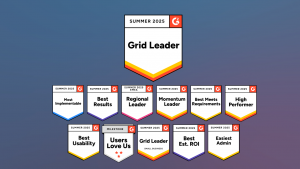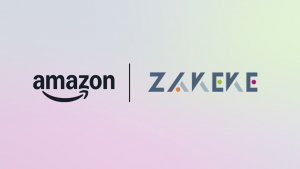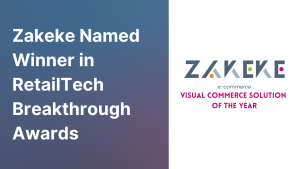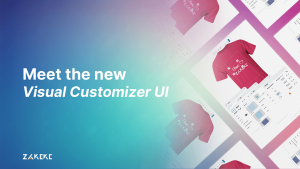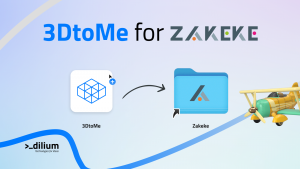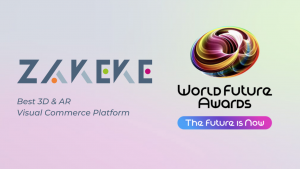In this guide, we’ll discuss product customization in detail and explain the benefits it can bring to your business. But first, let’s get down to the basics.
Who won’t love a personal touch in the products they order?
In today’s competitive world, consumers expect brands to tailor their products to meet the customers’ needs. The demand for customized products has reached sky-high in recent times.
A decade ago, this was primarily limited to mugs and mobile cases, where people used to have their photos printed on their mobile cases. Today, product customization has become the buzzword of the 21st century.
In the online world, e-commerce websites will adapt their pages based on the customer’s buyer behavior. Even the shows you watch on streaming services, like Netflix, are personalized based on your search and watch history.
Brick-and-mortar stores aren’t left behind, either.
More and more retailers are increasingly offering the same experience, where consumers can buy products specifically customized for them. The reason?
Product customization leads to more sales and stronger brand-employee relationships. In a recent study by Deloitte, 36% of shoppers said they covet customized products. Interestingly, 1 in 5 of these shoppers are willing to pay 20% more to have products customized for them.
What Is Product Customization?
Product customization is the process of delivering goods that have their key features and elements altered specifically to meet the buyer’s needs.
For example, a shoe company can allow a mountaineer to order a one-of-a-kind shoe ideal for their mountain climbing needs. Customers can approach the shoe retailer via their website, design the shoe they want, and make the order online.
A perfect example of product customization in real life can be seen in how the Fender company handles online guitar sales.
Fender, a California-based musical instruments company, provides many different options for each part of their guitars for customers to choose from. Customers can choose the color, body material, tuners, neck shape, fingerboard options, and more depending on their preferences. Customizing designs to user preferences leads to a better user experience and increased sales.
Product customization opens a world of endless possibilities for many industries, especially the apparel industry, allowing customers to experiment with various fabrics, designs, colors, and more before any product is made.
How Does It Differ from Personalization?
The terms “customization” and “personalization” are often used interchangeably.
And it makes sense because both practices aim to empower shoppers to create the exact product they desire, with confidence. However, the terms aren’t the same.
Product customization involves delivering goods that have their design, color, and other elements altered to meet customer preferences. In customization, the company provides a selection of options for customers to choose from.
Product personalization, on the other hand, takes things up a notch by inviting customers to embellish products with their own content. This can take the form of a personalized text or image, but there’s no limit to how you can personalize your products.
Personalization is about the seller tailoring the product to meet consumer needs but in a way that doesn’t require sophisticated manufacturing facilities. It’s all about making the shopper feel special by offering a few tweaks to the products in a way that differentiates the product from the mass-produced items.
Examples of personalization include printing a photograph on a standard manufactured product, sewing a patch, or embroidering a user-specific text on the product.
Personalization provides a unique shopping experience that drives sales and repeat business. Deloitte found that offering personalized products increases sales by as much as 30%.
A product can be personalized, customized, or both. Either way, the customer uses what’s called a product customizer or configurator. A product customizer is basically software integrated within a website that allows customers to visualize and select their options.
What about Product Configuration?
Product configuration is simply the act of selecting your options, which is offered at a basic level by most e-commerce platforms.
You can improve customer experience by integrating a product customizer that offers advanced features like augmented reality (AR) and 3D visualization.
Benefits of Product Customization
There are many reasons that make product customization a must-have tool for retailers. Here, we’ll look at the benefits e-commerce brands can enjoy from product customization.
1. Appeal to a Growing Audience
As mentioned, 36% of shoppers covet customized products.
With almost half of your customers yearning for customized experiences, providing a product customizer on your site can do wonders for your business.
Customizing a product adds a personal touch to it. When customers design products to their liking, the end product isn’t just the same as the mass-produced items. Customization adds a sentimental value to the product, whether they’re designing it for themselves or someone else.
2. Generate More Sales and Profits
One of the obvious benefits you get from product customization is an increase in sales.
First, customers love differentiated products. Giving them the option to choose their desired designs, colors, and other elements builds trust, which ultimately leads to brand advocacy.
Secondly, customers are willing to pay extra for customized products.
As Deloitte found, 1 in 5 customers wouldn’t mind paying an extra 20% to have the products customized to their preferences. This leads to increased revenue and profits.
3. You Gain a Competitive Advantage
The global e-commerce market is huge, with 1.8 million retailers operating in the US and contributing a staggering $861 billion to the US economy.
How can you stand out in such a competitive marketplace?
One way is to adopt product customization.
With a product customizer that provides unique customer experiences that shoppers won’t elsewhere, you’ll definitely set yourself apart from the competition.
Your store will stand out from others, and shoppers will recommend your brand for the unique experience. Additionally, you can charge an additional mark-up for offering a customized experience. Users are more likely to pay more since they’re emotionally invested in the designs that match their tastes and preferences.
4. Better Customer Insights
Another benefit you get from implementing product customization for your business is better customer insights. For instance, data obtained through product customization and AR visualizations can help you understand your customers better.
Monitoring how customers play around with your customizer will give you insights into how you should be creating your own catalog and what users like and dislike. You can also collect data about demographics and customer preferences to refine your offerings.
For instance, “virtual dressing” can give you deep insights into your customer’s tastes and preferences. You can then use this data to create better, personalized experiences for these customers. Ultimately, this can lead to better brand-customer relationships and increased sales.
We’re already used to having our Netflix and even YouTube selections personalized for us. This is because these companies use data from our past behavior (search and watch history) to offer more personalized experiences. Retailers can leap big by adopting such strategies.
5. Increased Customer Loyalty
Customer loyalty is key if you want to grow your business.
But customer loyalty can’t be bought. You must be willing to provide unique customer experiences that will compel your customers to stick around.
Research shows that 64% of customers are more likely to recommend a brand that offers better customer experiences.
If you treat your customers well and provide them with unique experiences, they become your brand ambassadors. They’ll spread good vibes about your business, post about their experiences on social media, and recommend your company to their friends and family.
When you personalize your products according to their tastes, their satisfaction level increases, and they are more likely to stick around and forge long-term relationships. This relationship leads to loyalty, brand advocacy, and repeat purchases.
6. Increased User Engagement
Integrating product customization software on your website will lead to increased user engagement. The more customers engage with your website, the higher the chances they will convert.
While customizing products, customers will definitely spend more time on your website. They will want to try out new colors, designs, and more. If you’re in the apparel space, customers will want to try out the clothes before buying.
This increased interaction with your brand can benefit your business in many ways. As noted, the more they stay on your site, the higher the chances they’ll convert.
On top of that, these interactions reveal a lot about their taste and preferences, and you can use the data from your configurator to refine your offerings. To increase engagement on your site, allow customers to have control over the level of customizations they want.
For instance, if your business sells men’s custom jackets, you can give your customers a wealth of options to choose from, including:
- Size
- Zipper pulls
- Logo stitching
- Color
- Custom label
- Material
This level of product customization engages your customers deeper by offering them virtually infinite options to choose from. It allows them to bring their “individuality” to the product they want to buy and will be willing to spend more for that.
7. Reduces Inventory Costs
Inventory costs can prove costly to any business.
Typical inventory costs vary by industry and size of the business and often comprise 20% to 30% of the total inventory value. This can hurt your bottom line, especially if you have excess or slow-moving inventory.
The solution?
Adopt a made-to-order business model, where the production begins only after an order is placed. The good thing about customized products is that they don’t get left lying around, as they’re usually made on order.
Keeping thousands of products requires a lot of space and is a risk because you don’t know whether the products will sell.
Instead of stocking up too many products and non-moving inventory, wait for what the customer wants and produce only what is needed. This way, you’ll save on warehousing costs, product carrying costs, and more. This business model can also reduce the amount of space you need to operate by as much as 30%, further leading to cost savings.
8. Increase the Profit Margin
Want to increase your profit margins? Let those products be customized!
Product customization can help you boost your profit margins in many ways. First, it leads to increased average order value. It’s easier to upsell a customized product than a mass-produced one. And the bigger the order value, the more the revenue and profits.
Secondly, pricing for customized products is often higher than for other products. As mentioned, you can charge a premium fee for customizing products.
Lastly, there’s the advantage of reduced returns.
Product returns are a big challenge for retailers. Research shows that over 20% of online bought products are returned.
Why do shoppers return items?
According to Shopify, consumer preference-based returns (size, style, and fit) drive 72% of all returns in the fashion industry. Non-preference reasons, such as products not as described, account for a mere 10%. These problems can be resolved through product customization.
Forward-thinking retailers integrate product configurators, AR, and 3D visualization software into their websites, allowing customers to “try before they buy.” This way, customers can try out the product, get the measurements, and virtually experience how the product will fit and feel. This helps to reduce returns and its negative consequences, such as a bad reputation.
In Conclusion
Product customization is the process of delivering goods that have their key features and elements altered specifically to meet the buyer’s needs.
In contrast, product personalization is all about tailoring the product to meet the customer in a way that doesn’t require sophisticated manufacturing facilities. Customization focuses on the product, while personalization is all about the people.
Product customization benefits businesses in many ways, including boosting sales, increasing customer loyalty, providing better customer insights, and making them competitive.
Want to implement a product configurator for your brand?
Get in touch with us today or book a demo here. We can help you move your brand to the next level with product customization and personalization and help your customers visualize how they’ll look before checking out with 3D and AR.
If you are wondering what you can do with Zakeke, check out our DEMO STORE.
Supported Platforms:
Stay up to date and follow us on LinkedIn, Facebook and Instagram



